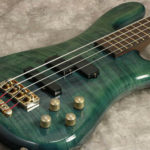Increasing Speed, While Decreasing Tension
In order to increase your speed and improve your guitar playing, you have to practice. The secret is to practice correctly, by understanding the importance of self-awareness. You need to become aware of the sensations of discomfort, that you experience while practicing. This is how you discover your mental awareness, of the physical feelings in your body. You need this to play well. It’s this great feeling of lightness, that makes fast, and accurate playing possible.
The concept is to develop relaxation in your muscles and relieve tension. we very quickly become used to whatever we experience, and consider it normal. We never question whatever tensions we experience in learning new skills on the guitar, and in fact, consider it part of the doing of it. And it often is, but it doesn’t have to continue to be that strenuous. We can learn to do movements with less effort.
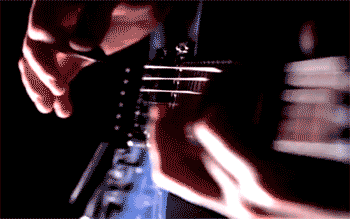
When we first try something, it is often not possible to do it without a lot of excess tension. The mistake is, we assume that the tension is inevitable, and never realize we can get to a point where we can get the result we want without all the huffing, puffing and straining. Often, more stretch or muscle development is required, which will come with a correct approach.
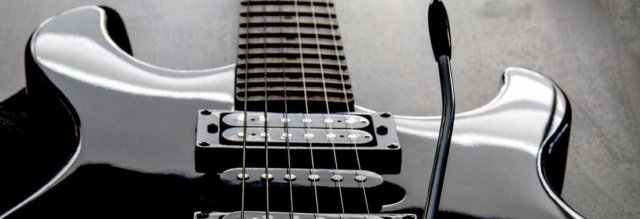
Of course, as we continue to try this new skill, and assume the effort we feel must be that way, it becomes ingrained into our approach and gets worse. So we have a vicious circle, that leads to frustration and bad playing.
Extra tension in the muscles, which every advanced player knows is the number one cause of playing difficulty, becomes a blind spot for us. Usually, we are only aware of the result of the tension, which is that mistake we just made. Often it happens we are not even aware of that, because we start to filter out those unpleasant reminders of our troubles.
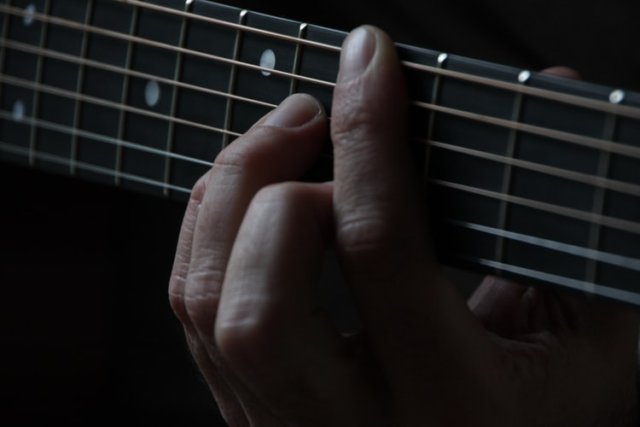
The correct approach to dealing with “mistakes” caused by tension, is to repeat the movement very slowly, while focusing on keeping all your muscles relaxed. With each repetition, your muscles will develop and learn the relaxed way of moving to produce the result you want.
It is the lack of understanding of how the body and mind functions, and lack of honest attention while practicing, that gets us into trouble.

You must start to observe your own tension, and replace it with relaxation. You will be amazed at how quickly you will improve as a player. Many players have no idea what this relaxed sensation feels like. It is important to connect with it, and then incorporate this feeling into actual playing. It feels great! In fact, when you see a good player “making it look easy”, it’s because it is easy once you release the tension. The great feeling is what makes it fun, and allows you to improve faster.

The first step is to completely relax your fingers. Then, bring them to the strings, and touch the strings, using only the weight of your finger. Do not press the string down yet.

Try this exercise to lighten your fingers.
- Raise your arms in front of you, and hold the index finger on your left hand with the thumb and index finger of your right hand. Completely relax the left index, and wiggle it around with your right hand.
- Touch the palm of your right hand with your left index. Raise the left index two inches from the palm. Now let it drop lightly to your palm, touching it with no pressure. This is how the finger feels when it first touches the string.
- Now hold the guitar, while concentrating on being comfortable and relaxed throughout your body. Slowly raise your left arm to the neck, bringing the hand up so that the index finger is lined up with the ninth fret. Have your fingers in a relaxed curl over the 6th string, and let your middle finger to fall to the 6th string, behind the 10th fret.
- Touch the string, but apply no pressure. Look at the string under your finger, and see the distance between the string and the fingerboard. Make sure the string does not move at all down toward the fret.
- Raise your finger an inch, and then bring it back to touch the string again in the same way. bringing it away, and touching it again. This is called Finger Flapping. Do this a few times with each finger every day. Make sure you keep the inactive fingers as relaxed as possible while touching the string with the active finger. This is how your fingers will be when they first touch the string to play a note, and it is the feeling they will return to when they release from a note. It enables them to be prepared for their next job.
Speed
Speed, or the ability to execute movements rapidly and accurately, is simply the result of a continuous correct practice. Think of walking and running. We learn to place one foot in front of the other, while our body parts work together to keep the movement going. Once we master that and our balance, the ability to run comes naturally and effortlessly.
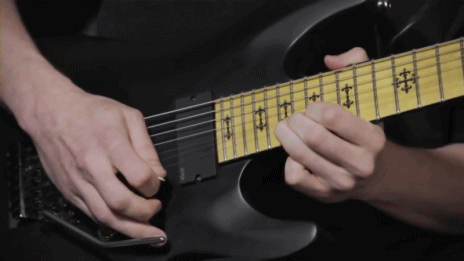
The foundation is the concept of practicing correctly. By keeping our muscles relaxed, we develop coordination and control of our fingers.
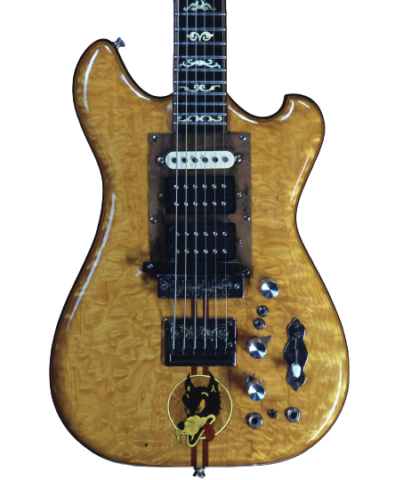
The first principle is our awareness. The second principle is how we infuse that awareness into our muscles, through control and relaxation. The control of our fingers is developed by repetition of practicing correctly.
As with all things in life, we start out slowly. Through repetition, we naturally develop and master skills. By maintaining relaxation, our muscles and abilities will progress, with coordination and speed. Tension will only frustrate you and hold you back. Practice regularly and correctly, and you will see results. Speed will come naturally.
Guitar & Gear Articles


